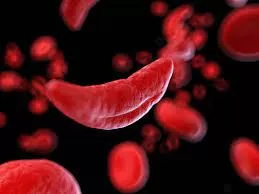
January 19, 2024
Electrical deep brain stimulation (DBS) has long been a staple in managing disordered movement in Parkinson’s disease, but its invasive nature has sparked a quest for less risky alternatives. In a groundbreaking study published in ACS’ Nano Letters, researchers present a novel application of the technique known as magnetogenetics, utilizing tiny magnets to wirelessly activate specific, gene-edited nerve cells in the brain. This revolutionary approach proved effective in alleviating motor symptoms in mice without causing damage to the surrounding brain tissue.
Traditionally, DBS involves the implantation of electrodes in the brain, with an external battery pack sending electrical signals through wires to activate nerve cells in the subthalamic nucleus (STN) region. While STN activation has been successful in alleviating Parkinson’s disease symptoms, the invasive nature of the procedure, along with potential severe side effects such as brain hemorrhage and tissue damage, has limited its use to late-stage cases. However, researchers Minsuk Kwak and Jinwoo Cheon, along with their colleagues, have now developed a wireless method aimed at reducing motor dysfunction in people with Parkinson’s disease.
In this wireless technique, nanoscale magnets were tagged with antibodies to facilitate their adherence to the surface of STN nerve cells. These magnets were injected into the brains of mice previously modified with a gene causing them to activate when the modified magnets on the cell’s surface twisted in response to an externally applied magnetic field of approximately 25 milliteslas—about one-thousandth the strength of an MRI.
The results of the study demonstrated promising outcomes, with mice exposed to the magnetic field exhibiting improved motor function comparable to that of healthy mice. The researchers noted that mice receiving multiple exposures retained more than one-third of their motor improvements, indicating potential cumulative benefits. Notably, nerve cells in treated mice showed no significant damage in or around the STN, suggesting a safer alternative to traditional implanted DBS systems.
The researchers believe their wireless magnetogenetic approach holds therapeutic potential beyond Parkinson’s disease. It could be extended to treat motor dysfunction in individuals with both early- and late-stage Parkinson’s disease, as well as other neurological disorders such as epilepsy and Alzheimer’s disease.
The team is optimistic about the broader applications of this wireless magnetogenetic technique, offering a beacon of hope for a less invasive and safer treatment for individuals grappling with neurological disorders. The study was supported by funding from the Institute for Basic Science, emphasizing the importance of continued research in advancing medical breakthroughs.











